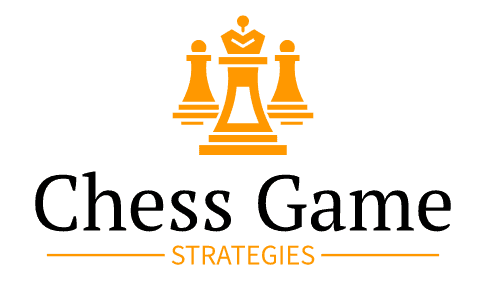
What is Point Count Chess?
Point Count Chess (PCC) was a 1950s-1960s publication, devised by Israel Albert Horowitz and Geoffrey Mott-Smith and has been hailed by some as one of the best books ever published, that deals with Chess Strategy.
PCC attempted to use a scoring system, taken from the game of ‘Bridge’, to analyze any given position during a game of Chess, to help a player weave their way through all the many threats, to plot a course for victory.
The idea was, with each impending move, to assess the board and look for various aspects, or elements, that were either an Advantage or Disadvantage. Each advantage would score a Plus Point and you’d add these together to form a sub-total. Each disadvantage would be a Minus Point, deducted from the sub-total, to give an overall value score for the current position. You’d make the Point Count assessment based on the advantages/disadvantages of both armies.
In H&M-S’s own words …
“To apply the system, examine the positions of your forces and your opponent’s forces. Credit yourself with one point for every item due you on the plus list and deduct one for every due liability on the minus list. Do the same for your opponent’s position. Then compare his net score with yours. The difference measures the strategic superiority, if any, that one of you enjoys.” They go on to say … “tactical problems often solve themselves if you keep in mind at all times your strategical objectives.”
On page 8, in PCC, H&M-S compiled a table of all the various Advantages and Disadvantages that a player must be aware of:
POSITIONAL POINT COUNT TABLE
Plus Points
| Control of the center Pawn on fourth v. pawn on third Mobile pawn wing Strong outpost station Superior development Greater space Bishop-pair Bishop v. knight Half-open file Control of useful open file |
Rook(s) on the seventh rank Passed pawn Outside passed pawn Protected passed pawn Advanced pawn Qualitative pawn majority Advanced chain Advanced salient Better king position Offside pawn majority |
Minus Points
WEAK PAWNS
| Backward pawn Doubled pawn Isolated pawn |
Hanging pawns Hanging phalanx Crippled majority wing |
WEAK SQUARES
| “Weak-square complex” Holes Compromised king-side |
King held in center Cramped position Bad bishop |
… and throughout PCC, H&M-S went on to explore, explain and give examples of each Plus and Minus situation.
Finally, in Chapter 24 of PCC, between pages 281-285, H&M-S presented a “Practical Value and Application of Point Count”, to help you determine your course of action, based on the net value from your point count assessment. It gave you suggestions as what to do if you are:
- More Than Four Net Points Plus
- Four Points Plus or Minus
- Two Points Plus or Minus
- One Point Plus or Minus
Now, it’s this very attempt to whittle down any position into a single value, to help determine your status on the board, which caused a bit of controversy among some chess players. The case in point can be found by the negative reactions of some reviewers of the book …
People’s Reactions to the Point Count Chess System
I found these reviews all clumped together, here, on Amazon.com, where you’ll also find the full Reviews of Point Count Chess, towards the bottom of that Amazon page …
Review by: “Knightstalker” (Davie, FL USA), January 5, 2005
- [Paragraph 4] SHOULD ONE TAKE THE POINT COUNT SYSTEM SERIOUSLY? No! Chess cannot be reduced to such a simplistic device …
Review by: “johnnyqb” (United States), April 18, 2006
- An interesting aspect of this classic book is the silliness of the concept: using a bridge-like counting system to evaluate positions. The authors attempt to add and subtract points in positional evaluation based on the presence or absence of factors like backward pawns, open files, etc. But while constructing a numerical scale as such is an inherently weak concept for a chess book …
Review by: “Howard”, August 23, 2008
- [Title] Except for the ludicrous title …
- [Paragraph 2] But there’s a huge caveat, which other reviewers–not at all surprisingly–have pointed out. That is to totally disregard the “point count” system, as described in the first couple chapters. You simply cannot evaluate a chess position merely by adding/subtracting points from the white side and then doing likewise on the black side, and then comparing the two totals to see which side supposedly stands better.
Review by: “Mr. Fred” (Honolulu, Hawaii), January 20, 2007
- [Title] Ignore the title …
- [Paragraph 1] As another reviewer mentioned, the point count idea in and of itself is silly; chess is not bridge, and evaluation methods are subjective rather than objective. There is no mechanical means of evaluating a chess position that eliminates the need for developed skill and judgment.
While the majority of reviewers were negative towards the Point Count Chess system, for evaluating the positions in a game, all were unanimous in their praise and respect for the sheer quantity and quality of strategical insight, contained within the 350+ pages of
H&M-S’s book …
Review by: “Knightstalker” (Davie, FL USA), January 5, 2005
- [Paragraph 4] “Point Count Chess” is probably the finest introduction to chess strategy ever written. Following the first chapter on the point count method, Horowitz and Mott-Smith go into an elaborate discussion of chess strategy.
Review by: “johnnyqb” (United States), April 18, 2006
- [Title] Amazingly instructive chess book
- [Lines 3-6] But while constructing a numerical scale as such is an inherently weak concept for a chess book, the authors’ use of that concept evidently caused them to produce one of the all-time most instructive chess books I have read. Let me just say that this book belongs on your shelf right next to Silman’s Amateur’s Mind and How to Reassess Your Chess.
Review by: “Howard”, August 23, 2008
- [Title] … a terrific book!
- [Paragraph 1] This book was one of the first chess books that I actually studied carefully, back in 1978. It is an excellent work when it comes to understanding chess strategic concepts, such as the bishop pair, isolated pawns, pawn salients, open files, and much more.
Review by: “Kevin Kiersky ‘oceaneagle'”, November 23, 2009
- [Title] An Accurate Guide to APPLY the Elements of Chess +++
Review by: “Mr. Fred” (Honolulu, Hawaii), January 20, 2007
- [Title] … but by all means study the book.
- [Paragraph 2] However, this book is exactly the right vehicle to bring you the positional skill and judgment you need. If you like, think “facets” instead of “points”.
My Opinion of Point Count Chess
Both Ken Wilsdon and myself have spent a great deal of time (between April and November 2011) discussing the different elements covered by Point Count Chess.
We’ve literally gone from cover-to-cover, taking advantage of the interactive, online ChessFlash player, to bring to digital-life the games and examples found throughout the pages of PCC, and to transfer them from their “Descriptive Notation” state, so they’re now using the modern “Algebraic Notation” system.
Our correspondence forms the basis the Advanced Beginner’s Chess Guide, on www.Chess-Game-Strategies.com. The reason I believe this is such good content is you get my insight, as the “beginner trying to get better” and Ken’s insight, with his 45+ years of chess-playing experience. These combined viewpoints which Ken and I provide, surrounding this material, is something you won’t find anywhere else online and I doubt anyone, so far has made such an indepth study of the fundamentals of the strategies and elements found in Point Count Chess.
So, with all that discussion that’s taken place, where do I stand on the matter of the system of trying to boil down chess into the sum total of ‘points’, as H&M-S attempted with Point Count Chess?
With the Chess Openings Analyzer, I did have a go at boiling down positions into a single numerical result … so, I have form in that respect.
For me, the jury’s still out on whether such numerical evaluation is justified, and, here, I’m talking about the final act of boiling every element (Positive/Advantage Points, less the Minus/Disadvantage Points) down into a “numerical value/score”.
Where I do find it relevant/useful, is in giving a Plus Point for each advantage and a Minus Point for the negative elements, or disadvantages. For me, they act as markers or signals, helping you learn to recognize what strengths, weaknesses, opportunities, and threats are on the board, for any given position. I don’t know of a simpler system to use, while learning these principles. That’s why I don’t share those blanket negative reactions to the Point Count system, as those Amazon reviewers.
As you work your way through applying the Point Count, regardless of the final score you get at the end, you’re also training your mind to take into account the static versus dynamic aspects of the current position, helping you to decide what course of action to take next – whether it be defensive play, building up an attack on the correct side of the board, or simply playing a quiet move to bide your time.

